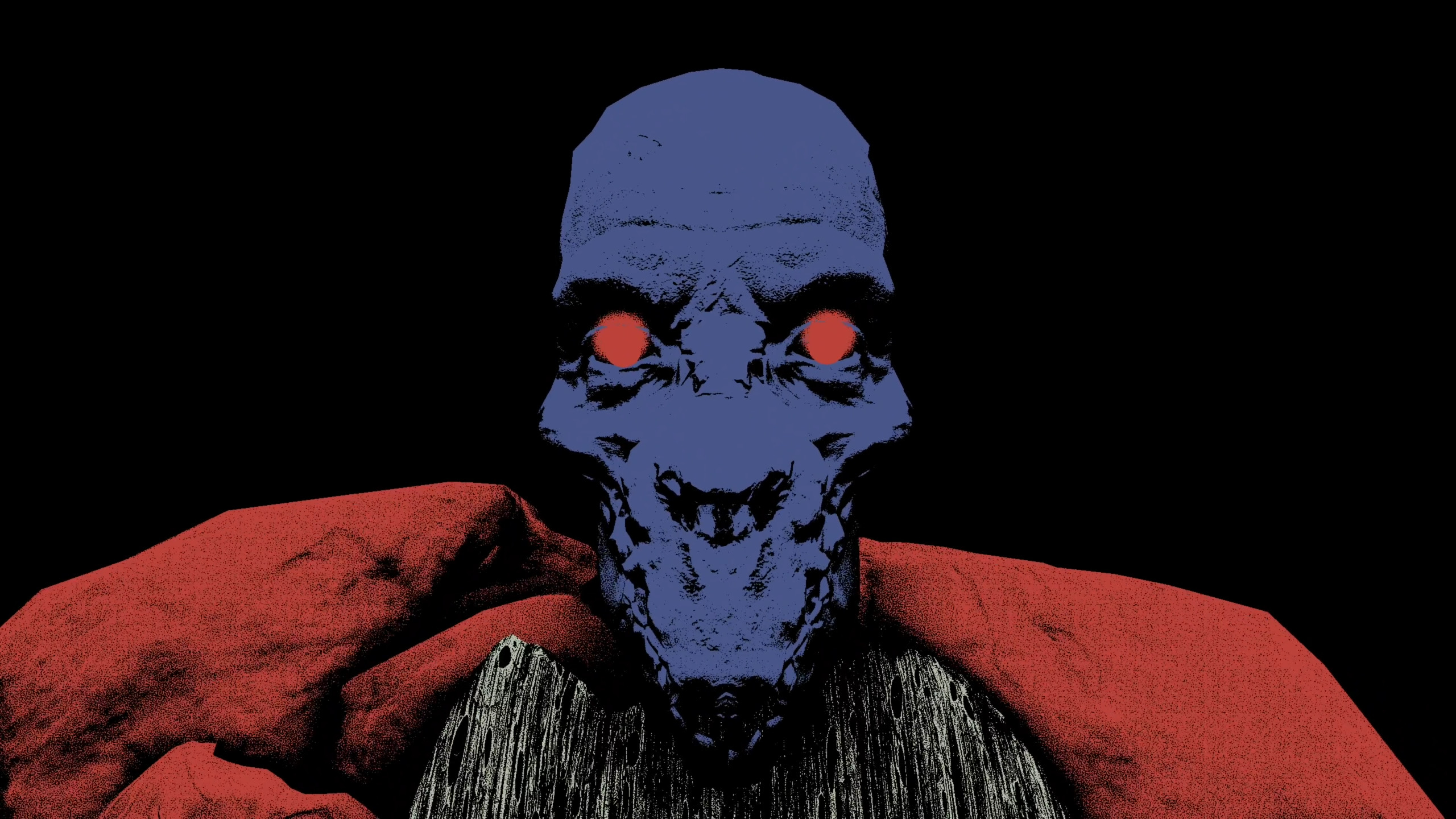Our Verdict
Mortal Sin is a skeletal roguelite, but the surprisingly meaty combat goes a long way to making up for that.
PC Gamer's got your back
Editor's note: This review is based on an unfinished version of Mortal Sin that was presented to PC Gamer as the complete game by mistake. You can find more recent impressions of Mortal Sin here.
What is it? A melee-focused action roguelite with a grungy visual style.
Expect to pay: TBC
Release date: Q1 2022
Developer: Nikola Todorovic
Publisher: Nikola Todorovic
Reviewed on: Intel Core i7-10750H, 16GB RAM, GeForce RTX 2060
Multiplayer? No
Link: Official site
Mortal Sin builds a riveting combat system from only a handful of elements. The most vital of these is your melee weapon, and the small bundle of moves at your disposal. You'll slash, kick, bash, and parry the demonic creatures that stalk you in each oppressive dungeon. There's a compelling rhythm to the combat, which interrupts tense, cramped, first-person dungeon-crawling with sudden bursts of frantic mouse-clicking. Similar to Dead Space, you need to fully dismember enemies to kill them. There are a lot of heads and limbs being flung around
You'll chop up foes primarily with meaty melee weapons including swords, halberds, and axes. Moves can be strung together in simple combos, for example by kicking a monster away, and then striking to get a free power attack. Tapping shift does a sort of dash-bash, which brings you closer to the enemy while administering a weaker hit. Whatever you have to do to keep the monsters away, thin crowds, and ultimately rend them limb from limb.
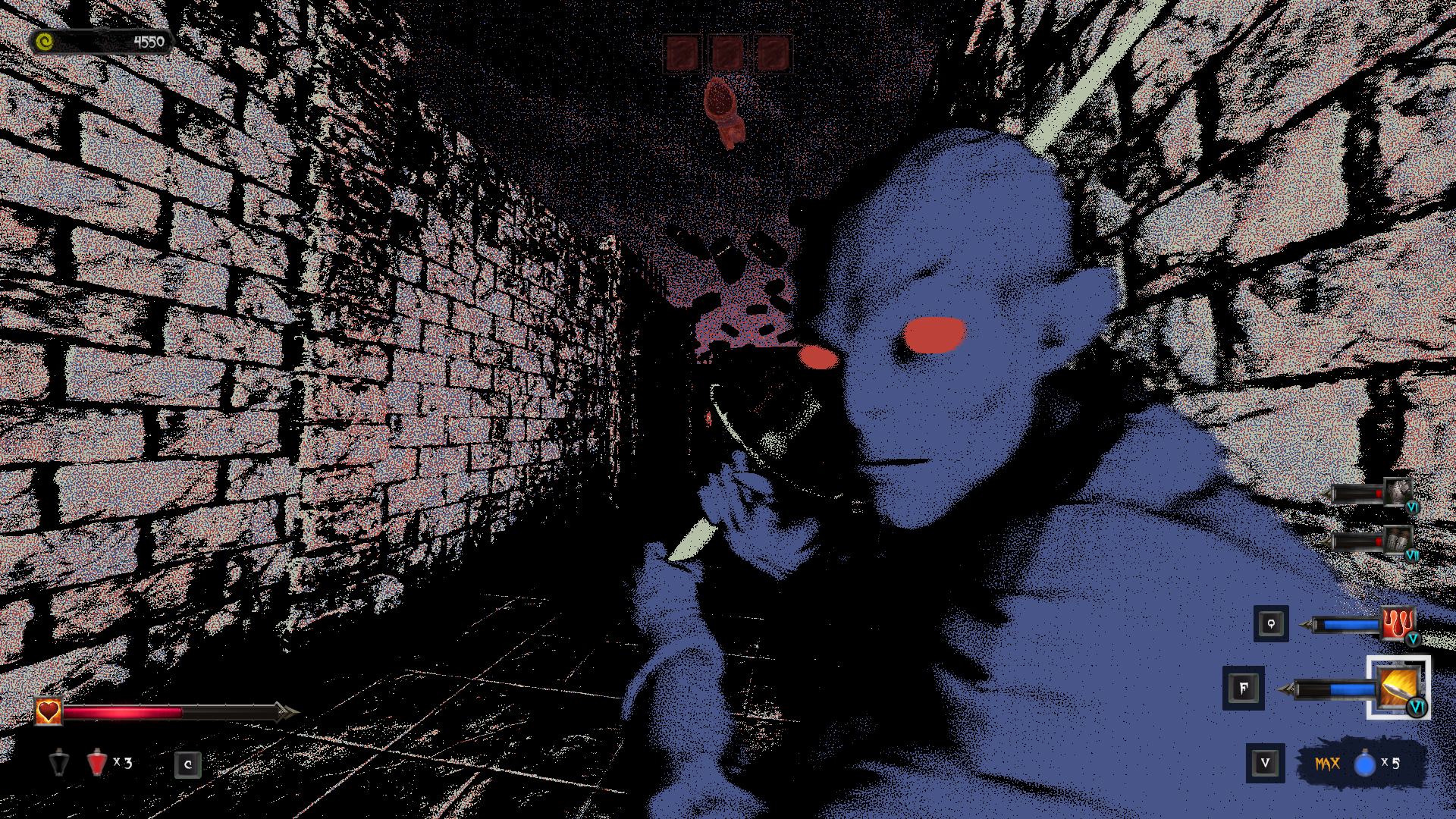
I'm digging into the combat straight away because that's the core of Mortal Sin: an action roguelite draped in a stark, grungy visual style. This is not a game that wastes time on things like story or fancy menu design. You begin each run dumped in a chapel ruin, before you head out to tackle one of the randomised dungeon gauntlets. This initially empty plot is gradually enhanced by helpful features including a crafting station and potion shop, but there's otherwise little to hold you here, other than the soulful, Diablo 1-style music.
When you enter one of the gauntlets, the calming music is replaced by a malevolent droning, as thudding footsteps echo threateningly throughout the level. Pretty soon you make first contact with an enemy, hacking wildly at its limbs before—for a laugh—kicking the headless creature into a deadly trap. Which brings me to the next most vital combat element: the world.
There's a level of interactivity here that reminds me of Dark Messiah of Might & Magic, which is still the daddy when it comes to first-person booting. Sadly, there are no orcs to punt off cliffs, but there is a smorgasbord of vicious traps, which are non-discriminating in who they chop up. While they might seem like horrible obstacles at first, really they're one of the best tools in your arsenal, and easily avoided by the wary player and their speedy dash move.
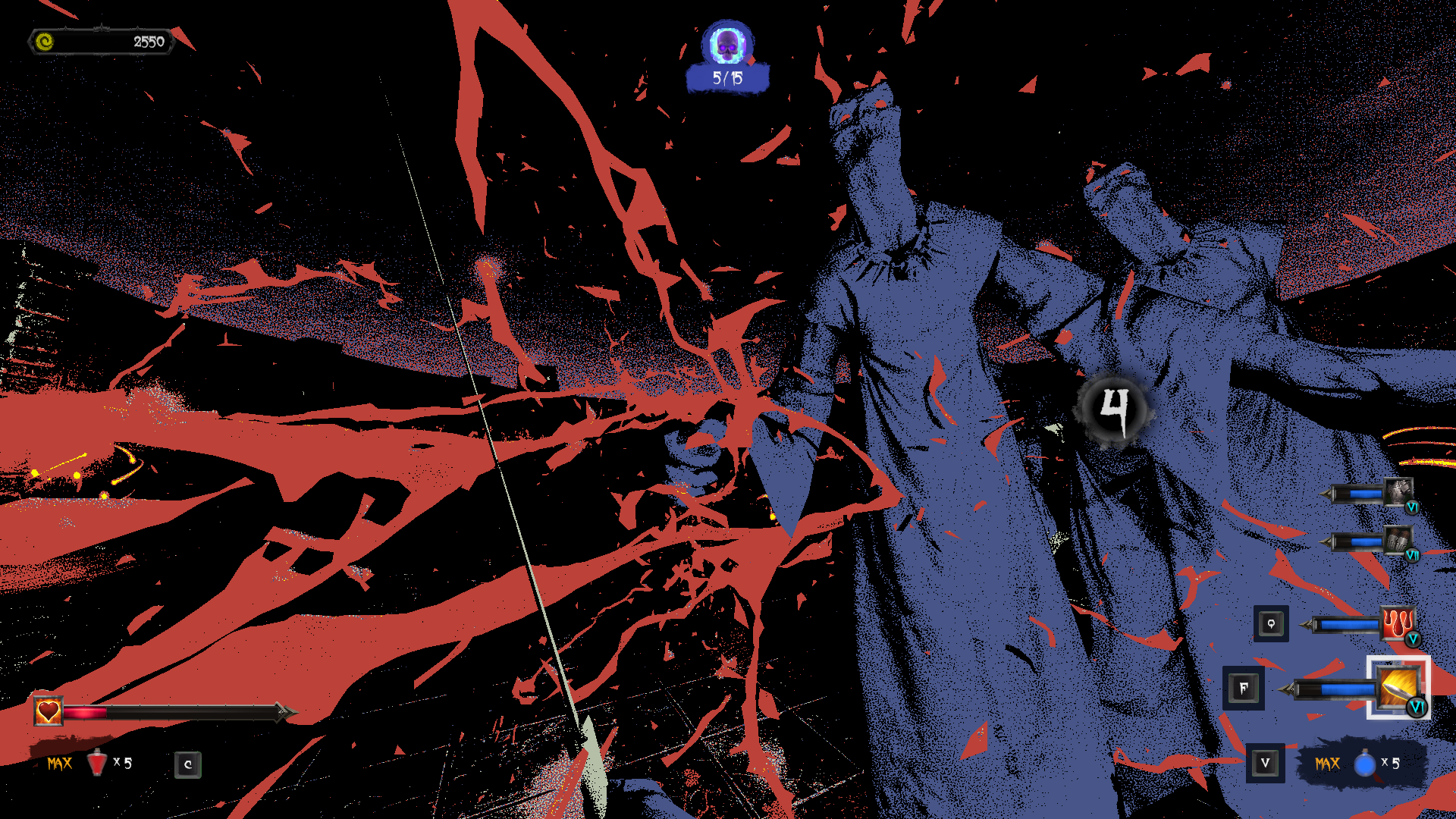
So you have your weapons, some nifty moves, and dungeons packed full of helpful traps—let's add some loot and skills and turn it into a proper roguelite. Loot is found primarily in treasure chests, and by grabbing it you drop your old gear—there's no inventory management to bog down the exploration. Likewise, you're given a choice of three upgrades after every couple of floors: simple skills that can mesh nicely with the abilities embedded on the choicest loot.
Mortal combat
As in any roguelite worth its salt, you're trying to build killer synergies, for example by pairing the regen ability with a skill that lessens its durability loss. Regen gradually heals damage, while the skill means the item won't wear out so quickly. Toss in some shoes that improve your rate at acquiring durability potions, and surely you'll be set for the rest of the run.
Well, no. Here, synergies are a careful balance that can be shattered at the drop of a pauldron. Durability is the pressing factor, with your weapons and armour degrading each time they're used. Durability potions will top you up, but even with the finest skills they won't last forever. When an item's durability is expended, it's permanently lost.
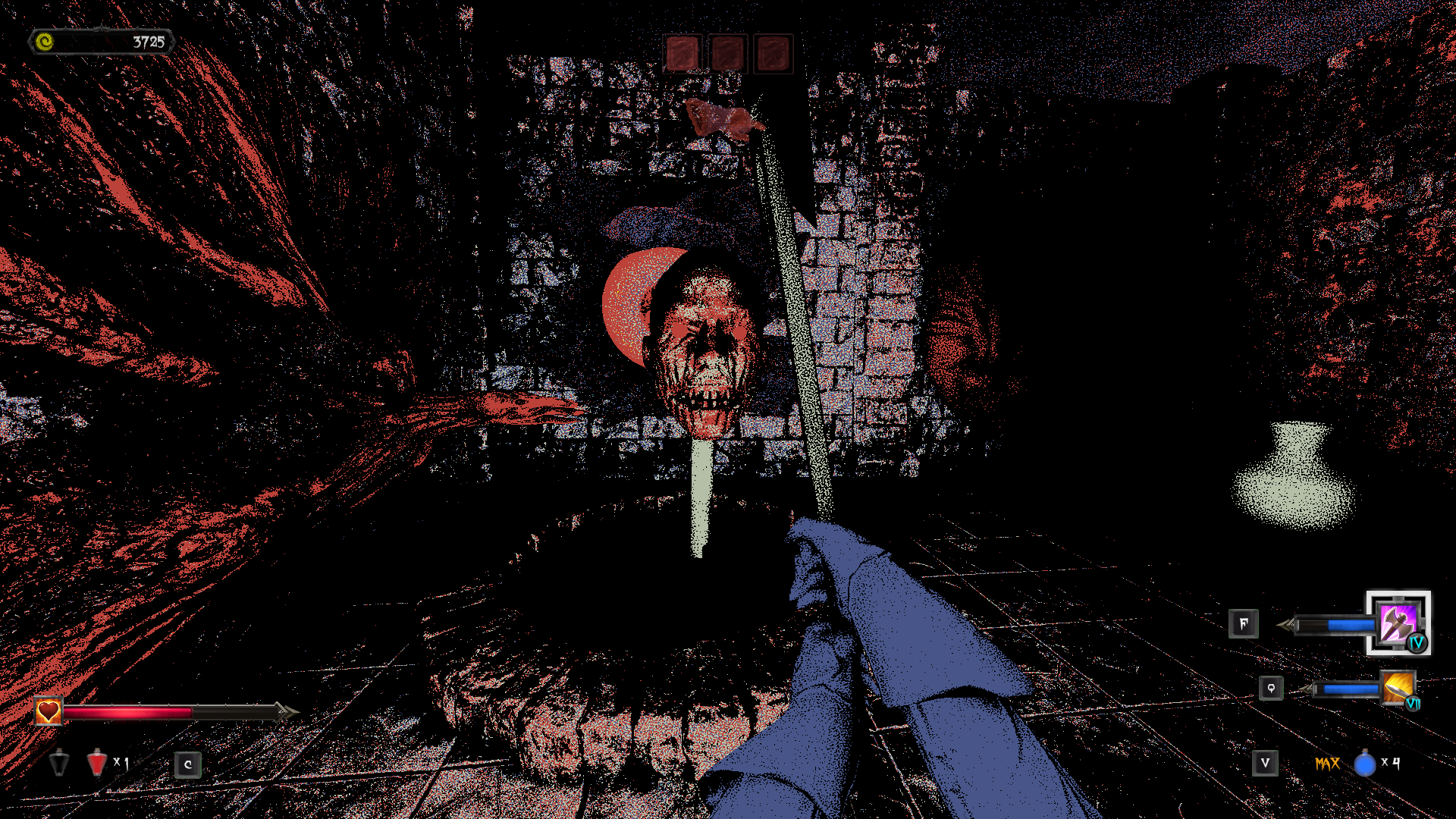
You can't let your guard down, and you have to watch your durability just as much as your health, which is probably why it's displayed so prominently on-screen. It's a clever approach to roguelite synergies, which does much to prevent the steamroller effect that can happen when you grow too powerful in these games.
However, in other ways this is a pretty under-baked roguelite. I'm torn on whether I like a bit of persistence or whether I prefer the pure blank slate in my roguelites—but Mortal Sin has found an unsatisfying middle ground. After each run, acquired gold can be spent at the crafting station or potion shop, to give you a leg-up for your next playthrough, but only if you don't exit the game. Quit out, and the next time you play you'll be starting with an empty purse. Similarly, you can't save the game when inside dungeons, which is a bit of a pain, though not too egregious, as runs tend to be quite short.
The only persistence you can rely on is your skill at Mortal Sin, which will steadily improve as you settle into the game's rhythm. More so than a lot of action games, this really put me into a focused state, as I chopped and weaved around the traps puncturing each level. The art style actually helps with this, as the background elements—the walls, skybox and dungeon props—are handily desaturated, while important elements like monsters and traps are highlighted in the primary colours.
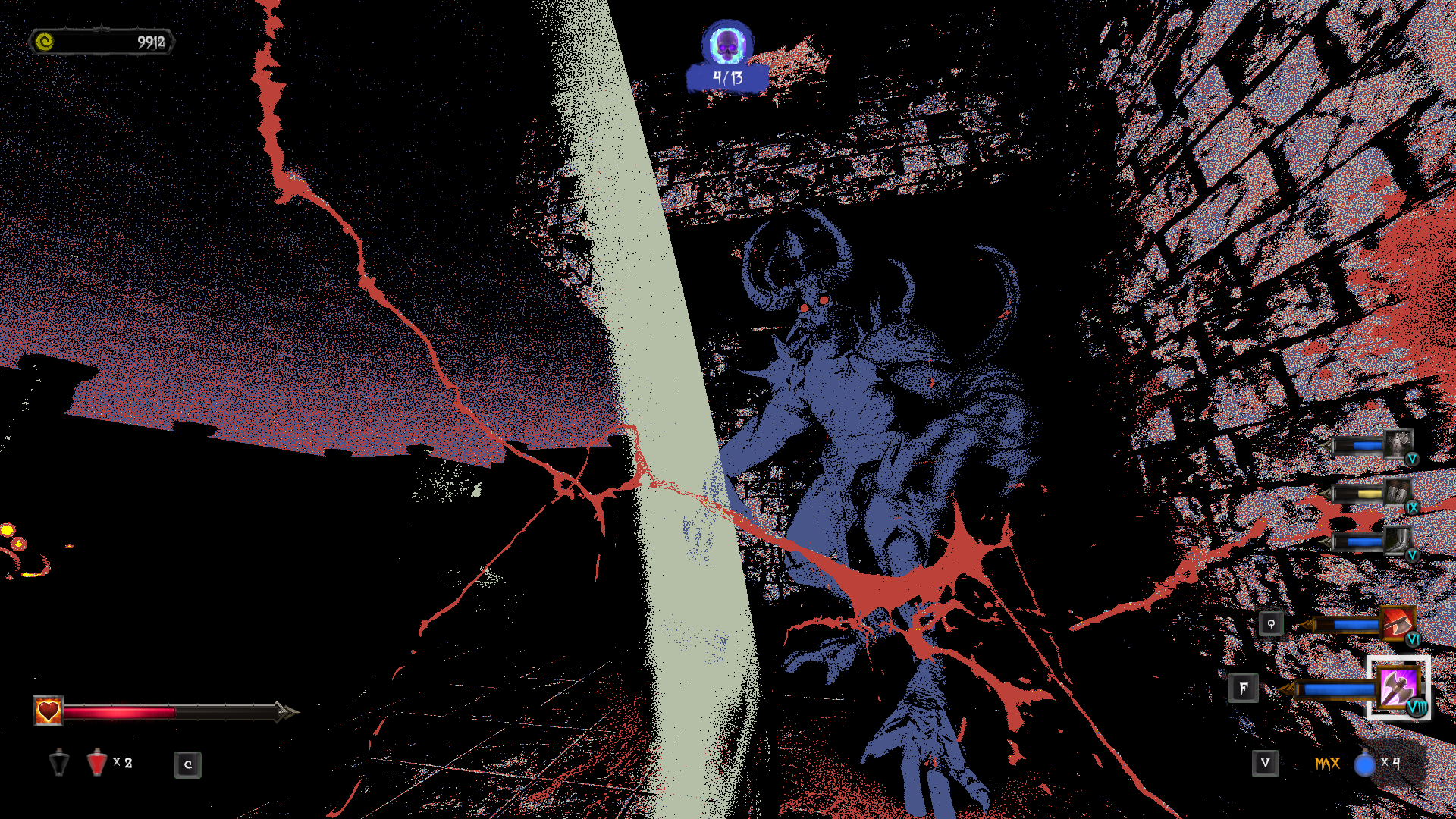
I came to think of Mortal Sin as a ghost train. Traps pop out of walls, and creatures lurk around corners waiting to surprise you—but there are also literal jump-scares that trigger every so often. Jack-in-the-boxes leap from grates, and demonic dolls suddenly appear on-screen. A swarm of bats might crowd around you, rendering you blind. These harmless japes may annoy some, but they're really only nuisances meant to prick the constantly building tension. If you're anything like me, you'll swear, laugh, and shake your head at the game for being a bit of a dick.
Mortal Sin has such exciting combat that you may overlook some of the less refined elements, like the unfriendly save system, the iffy persistence, or the frequent yoyo-ing between the different dungeons. Where it matters—in its loot, its interactivity, and above all its heart-stopping melee—Mortal Sin is one hell of a thrilling roguelite.
Mortal Sin is a skeletal roguelite, but the surprisingly meaty combat goes a long way to making up for that.
Tom loves exploring in games, whether it’s going the wrong way in a platformer or burgling an apartment in Deus Ex. His favourite game worlds—Stalker, Dark Souls, Thief—have an atmosphere you could wallop with a blackjack. He enjoys horror, adventure, puzzle games and RPGs, and played the Japanese version of Final Fantasy VIII with a translated script he printed off from the internet. Tom has been writing about free games for PC Gamer since 2012. If he were packing for a desert island, he’d take his giant Columbo boxset and a laptop stuffed with PuzzleScript games.
